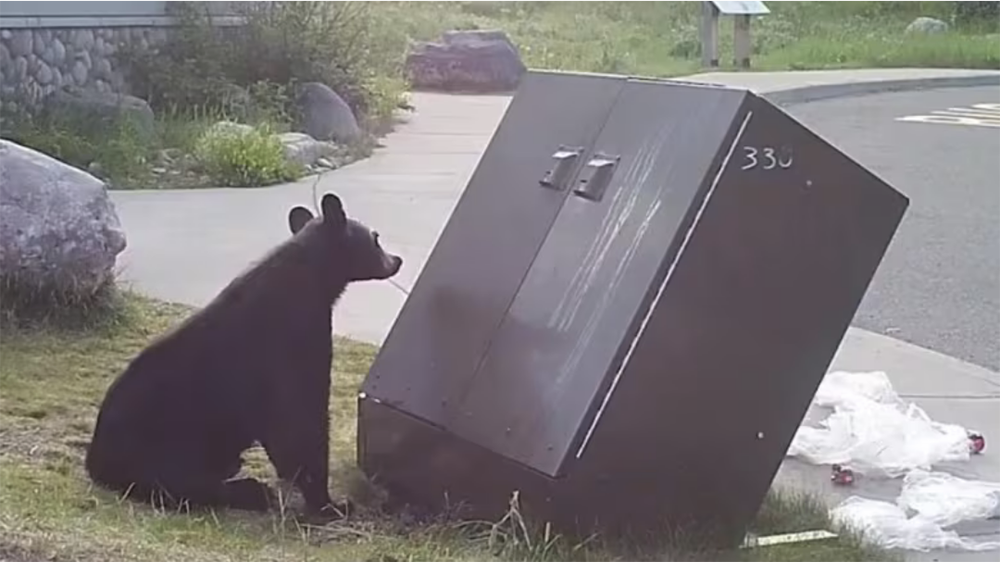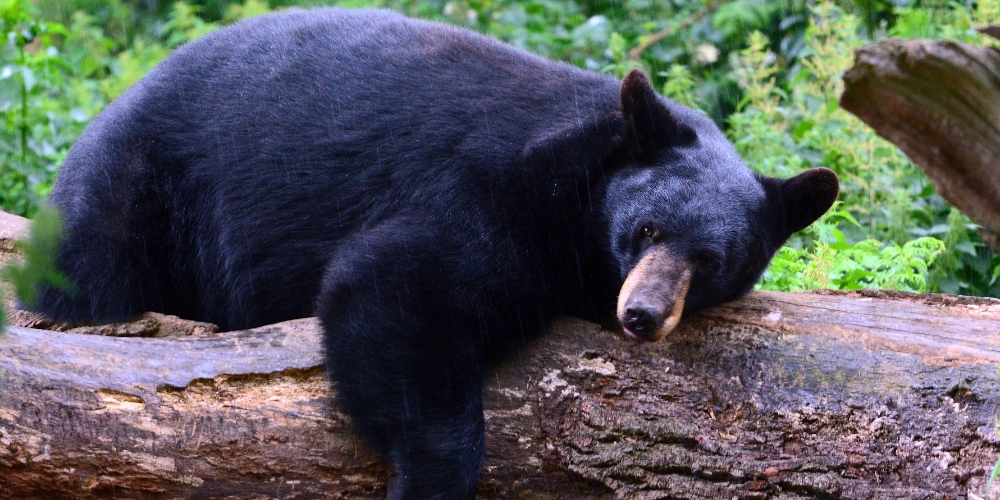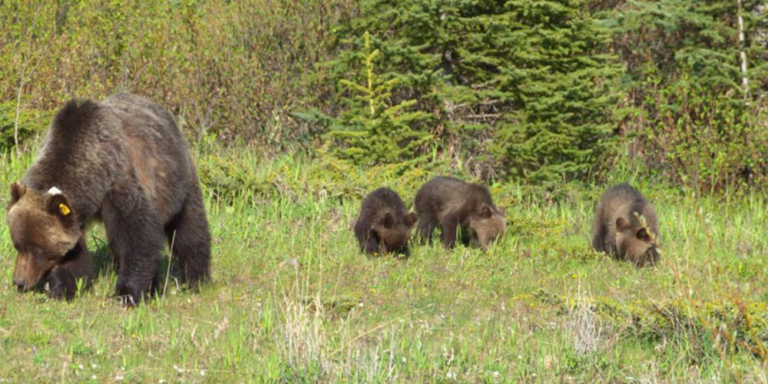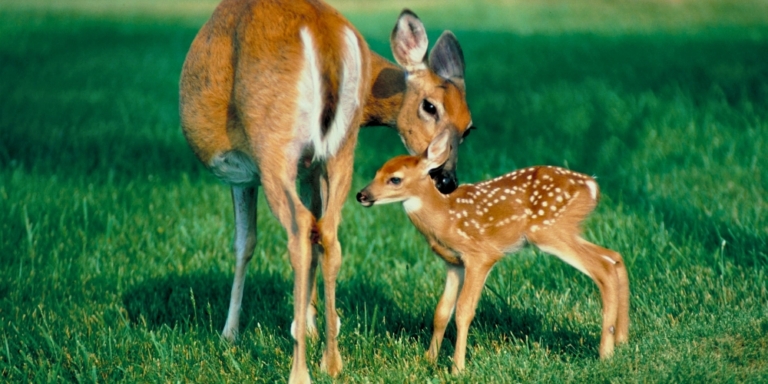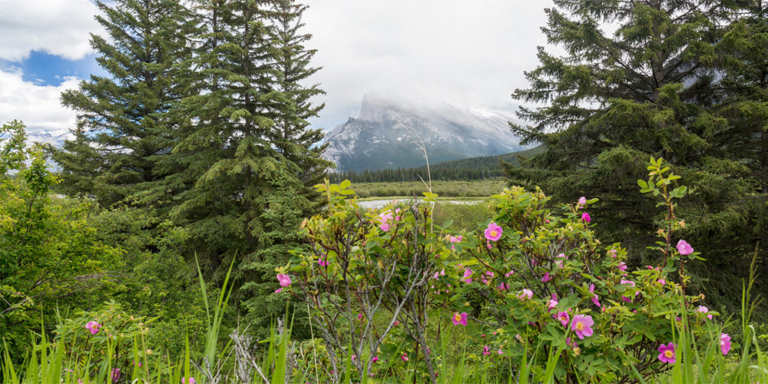Two black bears were killed by Parks Canada wildlife experts in Banff in early May, suggesting that hazing doesn’t always work.
The agency’s recent actions reinforce the need for better bear management strategies.
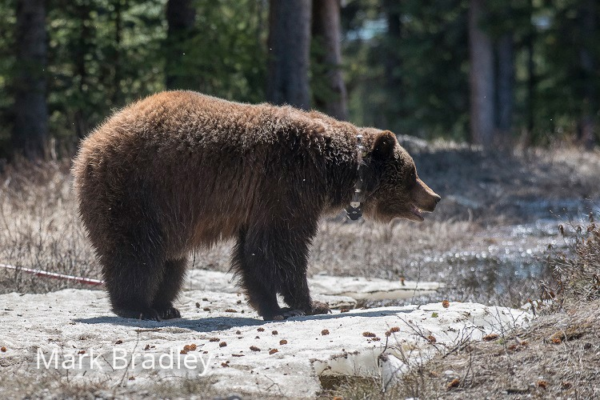
Wildlife hazing differs from college hazing in people and doesn’t require animals to complete embarrassing initiation rituals.
Instead, wildlife hazing reinforces boundaries between animals and humans to prevent conflicts.
Standard hazing techniques for bears include loud noises, paintball markers, and rubber slugs.
For many bears, if the hazing happens anytime it’s near people or a town, the bear will associate the negative impact received with being near people or towns and stay away.
In theory.
But if hazing is inconsistent, which it most often is, and the bear gets occasional food rewards when around people or in town, then hazing will fail.
One of the bears that was killed was a collared adult male tagged No. 2202 who had been hazed out of the town numerous times but kept returning.
A Humane Solution
In early May, Parks Canada responded to a report of a “sickly-looking” bear. When the agency arrived, they found a one-year-old abandoned female cub.
According to Cassandra Smyth, a strategic communications advisor for Banff National Park, the bear cub showed signs of compromised health and had trouble moving.
After a Parks Canada wildlife veterinarian examined the cub, the agency found that the cub was in extremely poor body condition, severely dehydrated, and showed signs of severe neurological disease.
“Due to the cub’s age and poor health status, rehabilitation was not a viable option, so it was euthanized. This was the most humane action to take for the sake of the animal,” said the Parks Canada veterinarian.
The bear cub was rightfully euthanized, but why was healthy male Bear 2022 killed?
Last summer, Bear 2202 had to be hazed out of the Tunnel Mountain campground and surrounding areas multiple times.
This year, Bear 2202 was spotted wandering through many Banff neighbourhoods. It had become increasingly bold and was entering busier areas of the town.
To make matters worse, the previously used hazing methods stopped working on Bear 2202.
He ignored the hazing attempts.
“Wildlife euthanasia is a last resort, used only when necessary to ensure the safety of the public or when it is in the best interest of the animal’s welfare,” Smyth told the Rocky Mountain Outlook.
The park euthanized Bear 2202 for ‘public safety.’
Was There Another Way?
People feeding wildlife is common and deadly for humans and animals.
Sometimes, people feed bears on purpose, but most of the time, the bear gets food rewards from humans who are careless with garbage, pet food, and bird feeders or who grow fruit-bearing trees or gardens in bear country.
When humans feed animals, they slowly become habituated and lose their natural fear of humans.
Instead of avoiding humans, habituated animals approach or allow humans to get close to them, leading to potentially dangerous encounters.
“Bears that become habituated to humans start to see us as a source of food and become dangerous,” Rob Simieritsch, a regional resource manager with Alberta Environment and Parks, told CBC News.
Hazing is the go-to method for preventing animal habituation, but it isn’t foolproof.
Translocation is another method that involves capturing and relocating wildlife to an area far away from its original habitat.
Unfortunately, the translocation of black bears only has a 30 percent success rate. Similarly, only one-third of grizzly bear translocations are successful.
Translocated animals are highly disadvantaged in a new environment because they need to find food and water in an unfamiliar habitat.
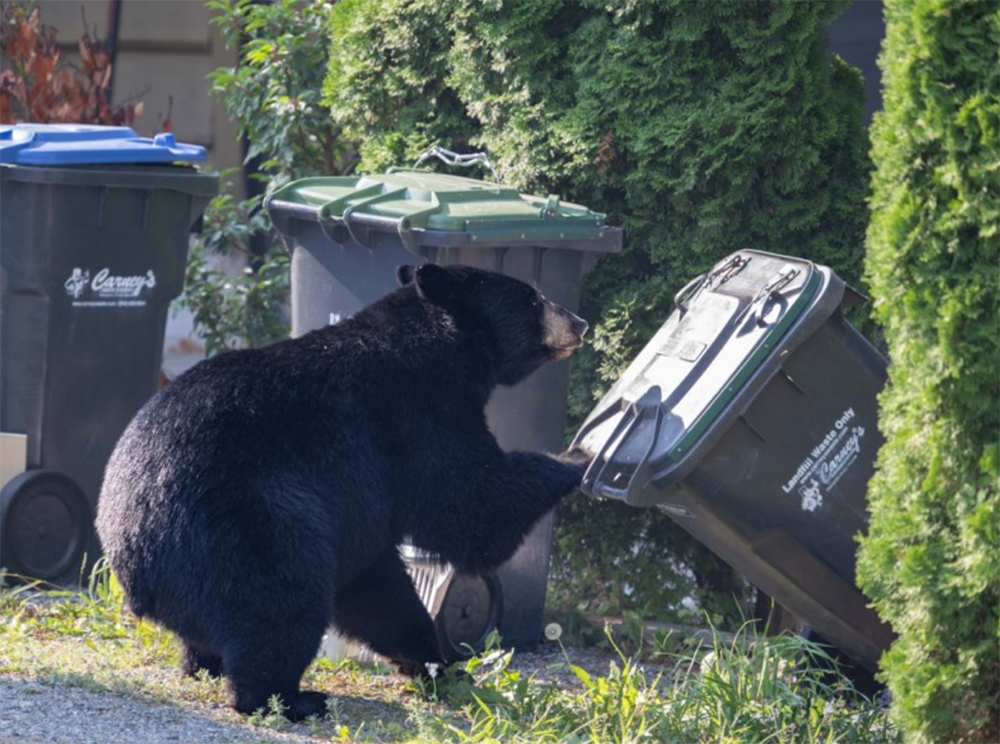

Translocation is also expensive, costing about $1,000 in capture and relocation costs, according to a study of over 100 grizzly bear translocations.
If Parks Canada claims euthanasia is a last resort, why did they kill a healthy adult male black bear instead of translocating the animal?
In 2017, Parks Canada decided against relocating a six-and-a-half-year-old female grizzly bear that approached three humans in Banff National Park.
The bear had been involved in hundreds of encounters, all without serious consequences, which is why the agency decided not to translocate her and left her alone.
More importantly, nothing tied her to the location; she was in her natural habitat. Unlike the black bear that was recently killed, she was not habituated to or attracted to human food sources.
However, is that enough reason to dismiss translocation as a solution for Bear 2202?
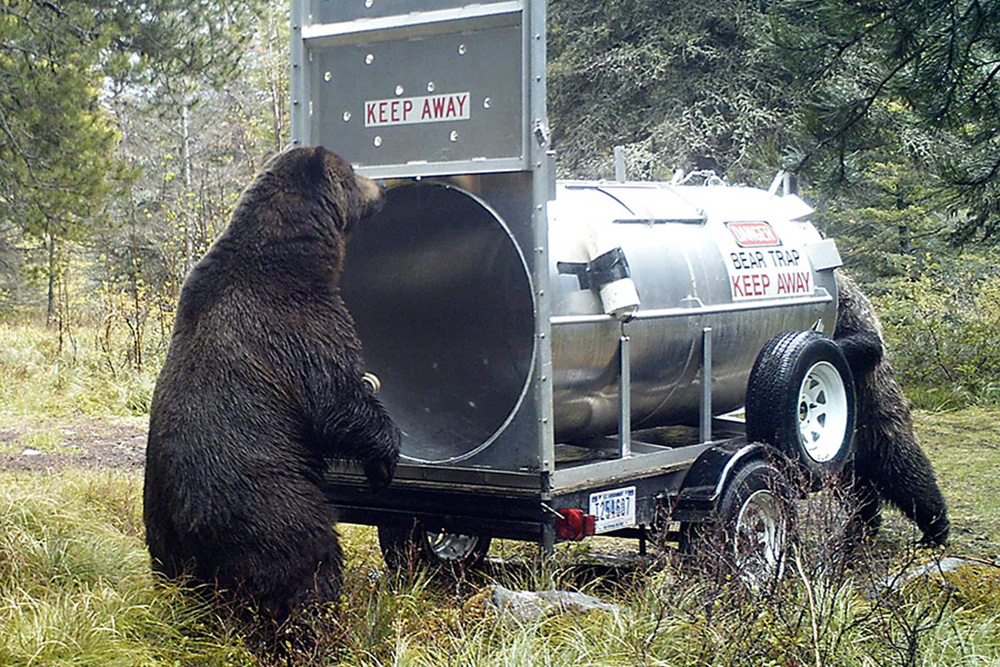

Shared Responsibility
Bear management is not the sole responsibility of Parks Canada.
People who enjoy the outdoors also have a role to play in protecting our province’s rich wildlife.
According to data collected by the Rocky Mountain Outlook, almost 60 black bears and two grizzly bears were shot and killed in the Cochrane-Canmore district between 2007 and 2017.
Over 100 black and 30 grizzly bears were relocated in the same district and period.
The story is much different in Banff National Park. Between 2007 and 2017, only one grizzly bear and three black bears were killed in Banff National Park with zero relocations.
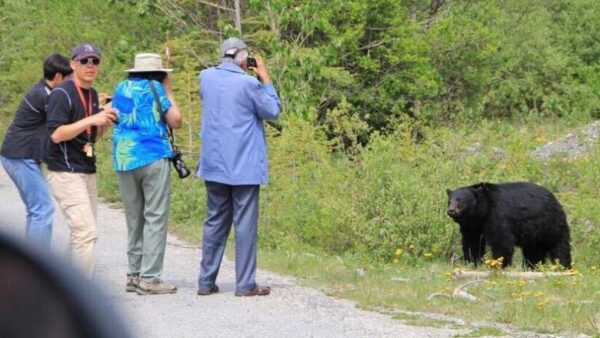

A remote camera study by Alberta Parks can explain the difference between the Cochrane-Canmore district and Banff National Park.
The study found that human use compared to wildlife use in the Bow Valley was 20:1.
It is difficult for bears in that area to avoid human contact, as so many people live in and use the area.
In fact, humans accounted for over 90 percent of all activity in designated wildlife corridors in the valley, and over 60 percent of the people caught on camera had their dogs off-leash with them.
Off-leash dogs are known to agitate bears, leading to unwanted and potentially dangerous encounters.
“About half the time when people get attacked by large carnivores, it’s because we’re doing what we call risk enhancing behaviour…leaving our children unattended, walking dogs in nature— mostly off-leash, people approaching females with young, which is never a good idea,” Kim Titchener, president of Bear Safety & More Inc. told the St. Albert Gazette.
A study of common Canadian carnivores found that the presence of dogs was involved in almost 20 percent of attacks.
When a bear charges of attacks a human or is considered a risk to public safety, it almost always pays with its life.
If an aggressive bear encounter was started because of human interference, like an off-leash dog, is it fair for the bear to be killed?
These are the questions that wildlife professionals like John Marriott are asking themselves.
“We need a complete overhaul of how bears are dealt with in this community and, just as importantly, in how this community deals with its own residents and visitors when bears are present,” Marriott told the Rocky Mountain Outlook.
Off-leash dogs are one of many threats to bears.
People who carelessly leave their trash out attract the attention of bears, which can lead to unwanted encounters and habituation.
Most of the “problem bears’ out there have been created by problematic human behaviour.
Is it fair that bears suffer fatal outcomes due to our poor actions?
Or can we do better?
